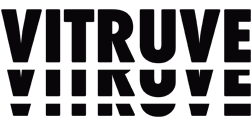21 de October de 2025
Training Stress Balance: How to Measure and Interpret
When it comes to understanding athlete readiness and performance, few metrics are as revealing as Training Stress Balance (TSB).
It’s a simple yet powerful way to visualize the relationship between fitness and fatigue, and it helps coaches determine whether an athlete is primed to perform, needs rest, or is at risk of overtraining.
Let’s explore what TSB really means, how to calculate it, and how to use it effectively in your training process.

What is Training Stress Balance (TSB)?
Training Stress Balance represents the difference between your Chronic Training Load (CTL) — your long-term fitness — and your Acute Training Load (ATL) — your short-term fatigue.
In formula form:
TSB = CTL − ATL
In simpler terms:
- A positive TSB means your body is fresh and ready to perform.
- A negative TSB means you’re carrying fatigue from recent sessions.
The concept is part of the Performance Management Model, widely used in endurance and strength sports to monitor training stress and recovery balance over time.
If CTL shows your accumulated fitness, and ATL your current fatigue, then TSB acts as the readiness score — the bridge between both.
How to measure TSB
To calculate TSB accurately, you need two inputs:
- Acute Training Load (ATL): the 7-day average of your daily Training Stress Score (TSS).
- Chronic Training Load (CTL): the 42-day average of your daily TSS.
Both ATL and CTL are derived from TSS, which quantifies how stressful each workout was based on intensity and duration. Once you have those two numbers:
TSB (today) = CTL (yesterday) − ATL (yesterday)
This shows how prepared your body is to perform today.
For example:
- CTL = 90 (strong long-term fitness)
- ATL = 100 (high recent fatigue)
- TSB = −10 → you’re tired but still within a productive training zone.
A TSB between −10 and −20 often indicates effective training stress. When it goes below −30, the athlete is likely overloaded and may need recovery. Conversely, a TSB between +5 and +15 typically represents an optimal taper before competition.

The Importance of Measuring CTL, ATL, TSB, and TSS
How to interpret TSB values
Here’s a practical way to understand your TSB numbers:
| TSB Value | Interpretation | Recommendation |
|---|---|---|
| +10 to +25 | Fresh and ready to perform | Ideal for testing or competition |
| 0 to +10 | Mild fatigue, manageable | Good for light training or tapering |
| −10 to 0 | Productive load zone | Continue progressive overload |
| −20 or lower | High fatigue | Recovery or deload recommended |
A good coach doesn’t chase specific TSB numbers blindly — they use them alongside subjective feedback, performance metrics, and velocity-based training data to make well-informed adjustments.
TSB, performance, and readiness
When ATL rises faster than CTL, your TSB drops — meaning fatigue is accumulating faster than adaptation.
If this state continues for too long, performance suffers. On the other hand, if you lower ATL slightly (through recovery or tapering), your TSB increases, signaling readiness for peak performance.
That’s why managing TSB is crucial in periodization:
- During build phases, you want slightly negative TSB (productive stress).
- Before competition, you want TSB to rise into positive territory (peak readiness).
In elite settings, this balance is constantly monitored through technology — combining load metrics with neuromuscular indicators to ensure the right timing between overload and recovery.
How Vitruve helps you monitor TSB
Tracking and interpreting TSB becomes far easier when integrated with the Vitruve Hub, a complete ecosystem for data-driven strength and conditioning.
- The Vitruve Workout Builder allows you to plan progressive overload and deload cycles that align with your target TSB ranges.
- The Vitruve Encoder provides real-time bar velocity and fatigue tracking, offering immediate feedback that complements load metrics like ATL and CTL.
- The Vitruve AMS centralizes all your load data (TSS, CTL, ATL, and TSB) — giving coaches and athletes a clear overview of training stress and recovery patterns.
By combining TSB monitoring with velocity-based data, you can make smarter, evidence-based training decisions — ensuring every session contributes to long-term progress without unnecessary fatigue.
Vitruve Hub
In summary
- TSB = CTL − ATL
- Positive TSB = fresh and ready to perform
- Negative TSB = accumulated fatigue (productive or excessive depending on value)
- Managing TSB helps optimize recovery, performance peaks, and injury prevention
When used alongside tools like the Vitruve Encoder and AMS, TSB transforms from a simple number into a true readiness indicator — helping you train and compete at your best.
